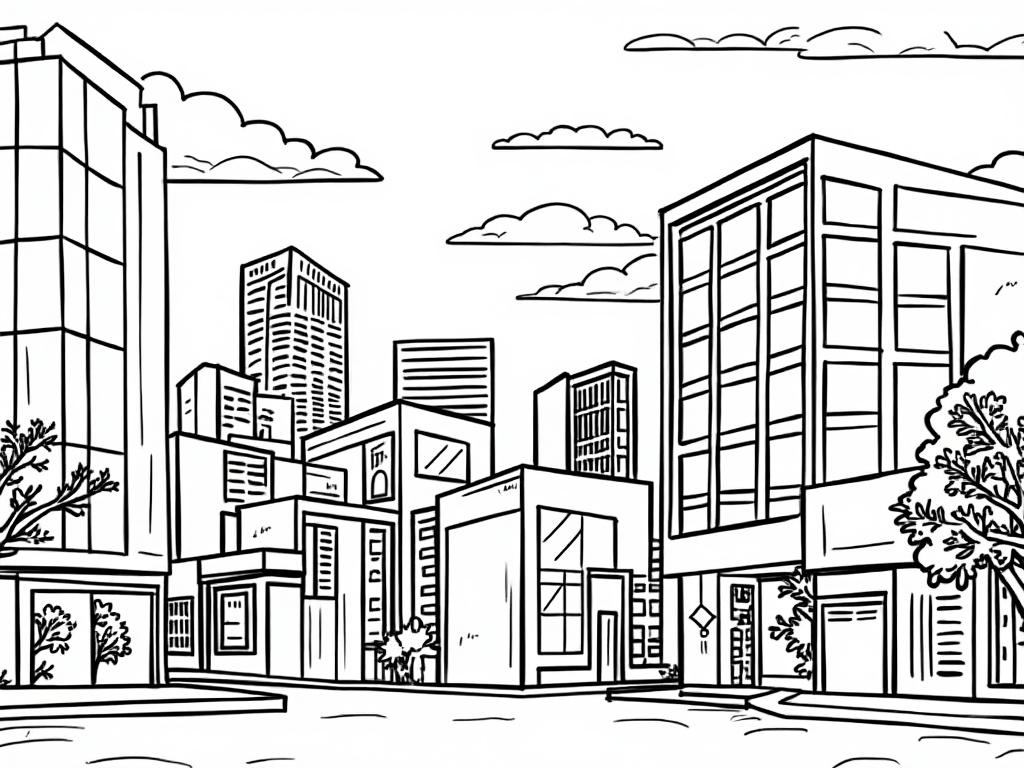Green Building Codes in the UAE: Standards

Green Building Codes in the UAE: Standards Driving Sustainable Construction Excellence
Reading time: 12 minutes
Table of Contents
- Understanding the UAE’s Green Building Landscape
- The Estidama Framework: Abu Dhabi’s Green Standard
- Dubai’s Green Building Regulations and Al Sa’fat Program
- Implementation Challenges and Strategic Solutions
- Comparative Analysis of UAE Green Standards
- Real-World Success Stories
- Your Green Building Compliance Roadmap
- Frequently Asked Questions
Understanding the UAE’s Green Building Landscape
Ever wondered why the UAE—a nation built on oil wealth—is now leading the Middle East’s green building revolution? You’re witnessing strategic foresight in action. The Emirates recognized early that sustainable construction isn’t just environmental responsibility; it’s economic necessity in a climate where cooling costs can consume 70% of a building’s energy budget.
The UAE’s approach to green building codes represents a fascinating case study in rapid regulatory evolution. Unlike many countries that adopted green standards incrementally, the Emirates launched comprehensive frameworks that immediately elevated construction requirements across multiple emirates.
Key Market Drivers:
- Energy cost reduction (average 30-50% savings for compliant buildings)
- Water conservation in an arid environment
- Enhanced property values and rental premiums
- Alignment with UAE Vision 2071’s sustainability goals
Here’s the reality check: Green building compliance in the UAE isn’t optional anymore—it’s becoming the baseline expectation. The question isn’t whether to embrace these standards, but how quickly you can master them to gain competitive advantage.
The Regulatory Ecosystem
The UAE’s green building landscape operates through a federated approach, where each emirate develops its own standards while maintaining alignment with national sustainability objectives. This creates both opportunities and complexities for developers and consultants working across multiple emirates.
Current Market Statistics:
– Over 2,000 buildings certified under various UAE green standards
– 15% average energy savings achieved by compliant residential buildings
– 25% water consumption reduction in certified commercial properties
– 40% faster permitting for projects meeting green requirements
The Estidama Framework: Abu Dhabi’s Green Standard
Abu Dhabi’s Estidama system represents one of the world’s most comprehensive green building frameworks, tailored specifically for the Arabian Gulf’s unique environmental challenges. Unlike international systems that often require adaptation, Estidama was built from the ground up for this climate.
Pearl Rating System Components
The Pearl Building Rating System evaluates projects across seven categories, each weighted according to regional priorities:
Integrated Development Process (IDP): This isn’t just about documentation—it’s about proving your team collaborated effectively from conception through operation. Think of it as quality assurance for sustainable design thinking.
Natural Systems: In a desert environment, every preserved habitat matters. Projects earn credits for protecting existing ecosystems and creating new green spaces that support biodiversity.
Livable Buildings: Indoor environmental quality takes precedence here, recognizing that occupant health directly impacts productivity and satisfaction.
Quick scenario: Imagine you’re developing a mixed-use project in Abu Dhabi. Your Estidama compliance strategy might involve installing smart glass that automatically adjusts tint based on solar conditions, reducing cooling loads while maintaining natural light—a perfect example of technology meeting regulatory requirements.
Mandatory vs. Optional Credits
Estidama’s structure includes mandatory requirements that every project must meet, plus optional credits for achieving higher Pearl ratings. This tiered approach allows flexibility while ensuring minimum performance standards.
Mandatory Elements Include:
- Energy and water metering systems
- Construction waste management plans
- Indoor air quality monitoring
- Sustainable site planning principles
Pro tip: The most successful projects don’t just meet mandatory requirements—they strategically select optional credits that align with their budget and operational goals, creating a customized sustainability profile.
Dubai’s Green Building Regulations and Al Sa’fat Program
Dubai Municipality’s approach to green building regulation reflects the emirate’s business-friendly philosophy: clear standards with streamlined compliance processes. The Al Sa’fat program, launched in 2014, has evolved into a sophisticated framework that balances environmental performance with economic viability.
Al Sa’fat Rating Categories
Dubai’s system recognizes that different building types require different sustainability strategies. The program offers specialized pathways for:
Residential Buildings: Focus on energy efficiency, water conservation, and indoor environmental quality. Single-family homes and apartments follow different criteria recognizing varied usage patterns.
Commercial Buildings: Emphasis on operational efficiency, occupant productivity, and lifecycle cost optimization. Office buildings, retail spaces, and hospitality projects each have tailored requirements.
Industrial Facilities: Specialized criteria addressing process efficiency, waste management, and environmental impact mitigation specific to manufacturing and logistics operations.
The genius of Al Sa’fat lies in its practical flexibility. Unlike rigid point-based systems, it allows projects to demonstrate compliance through multiple pathways, accommodating Dubai’s diverse architectural landscape.
Integration with Building Permits
Dubai has successfully integrated green building requirements into its standard permitting process, eliminating the traditional separation between sustainability compliance and building approval. This streamlined approach reduces project timelines while ensuring consistent application of green standards.
Recent data shows that projects meeting Al Sa’fat requirements receive building permits 20% faster than non-compliant applications, creating a clear business incentive for early sustainability planning.
Implementation Challenges and Strategic Solutions
Let’s address the elephant in the room: implementing green building codes in the UAE presents unique challenges that require innovative solutions. The most successful developers have learned to turn these obstacles into competitive advantages.
Challenge 1: Climate-Specific Performance Requirements
The UAE’s extreme climate conditions—with summer temperatures exceeding 45°C and humidity levels reaching 90%—create performance demands that international green building systems often don’t address adequately.
Strategic Solution: Successful projects invest in climate-responsive design from the earliest planning stages. This means selecting materials, systems, and strategies specifically validated for Gulf conditions rather than adapting temperate climate solutions.
Real-world example: A recent Abu Dhabi office tower achieved Pearl 4 rating by implementing a district cooling system combined with smart building controls that adjust HVAC performance based on real-time occupancy and weather data, resulting in 45% energy savings compared to conventional buildings.
Challenge 2: Cost Perception vs. Reality
Many developers still perceive green building compliance as a cost burden rather than an investment opportunity. This mindset often leads to minimal compliance strategies that miss significant value creation opportunities.
Strategic Solution: Leading developers now use lifecycle cost analysis tools that demonstrate the total economic impact of green building features, including reduced operating costs, higher rental rates, and faster lease-up periods.
Comparative Analysis of UAE Green Standards
Understanding the differences between UAE green building codes helps developers choose optimal compliance strategies for multi-emirate projects.
| Criteria | Estidama (Abu Dhabi) | Al Sa’fat (Dubai) | LEED (International) |
|---|---|---|---|
| Primary Focus | Holistic sustainability + cultural integration | Energy efficiency + economic viability | Environmental performance + health |
| Certification Levels | 1-5 Pearl rating | Bronze, Silver, Gold, Platinum | Certified, Silver, Gold, Platinum |
| Climate Adaptation | Specifically designed for Gulf conditions | Regionally adapted with local requirements | Requires regional adaptation |
| Implementation Timeline | 12-18 months typical | 8-12 months typical | 12-24 months typical |
| Market Penetration | Mandatory for major projects | Voluntary with incentives | Voluntary, premium positioning |
Performance Comparison Visualization
Energy Efficiency Requirements Comparison
Real-World Success Stories
Case Study 1: Masdar City’s Sustainable Urban Planning
Masdar City represents the UAE’s most ambitious green building experiment—an entire carbon-neutral urban development. The project demonstrates how comprehensive green building codes can be applied at city scale.
Key achievements include:
– 40% reduction in energy consumption compared to conventional developments
– 50% reduction in water usage through advanced recycling systems
– Integration of renewable energy sources providing 100% clean power
– Advanced waste management achieving 98% diversion from landfills
The lesson for developers: Masdar proves that aggressive sustainability targets are achievable when green building principles are integrated from the master planning level rather than added as afterthoughts.
Case Study 2: Emirates Palace – Luxury Meets Sustainability
The Emirates Palace hotel renovation project showcased how existing luxury properties can achieve green certification while maintaining premium positioning. The project achieved Pearl 2 rating through strategic retrofits targeting the highest-impact improvements.
Implemented solutions included:
– Smart lighting systems reducing energy consumption by 35%
– Water-efficient landscaping cutting irrigation needs by 60%
– Advanced building management systems optimizing HVAC performance
– Sustainable material selection for all renovation work
This case demonstrates that green building compliance doesn’t require sacrificing luxury or guest experience—when done strategically, it enhances both.
Your Green Building Compliance Roadmap
Ready to transform UAE green building requirements from regulatory burden into competitive advantage? Here’s your strategic implementation roadmap:
Phase 1: Foundation Setting (Months 1-2)
- Conduct comprehensive site analysis incorporating climate data and local regulations
- Assemble an integrated design team with proven UAE green building experience
- Establish clear sustainability goals aligned with business objectives
- Develop preliminary budget allocations for green building features
Phase 2: Strategic Planning (Months 3-4)
- Complete detailed compliance pathway analysis for your chosen emirate
- Integrate green building requirements into architectural and engineering design
- Secure pre-approval meetings with relevant authorities
- Finalize technology selections and vendor partnerships
Phase 3: Implementation Excellence (Months 5-12)
- Execute construction with continuous compliance monitoring
- Maintain detailed documentation for certification submissions
- Conduct regular performance testing and system commissioning
- Prepare for final inspection and certification processes
Phase 4: Operational Optimization (Ongoing)
- Implement performance monitoring systems for continuous improvement
- Train building operations staff on green building system management
- Document lessons learned for future project applications
- Leverage certification achievements for marketing and tenant attraction
The UAE’s green building landscape will continue evolving, with emerging technologies like AI-driven building management and advanced renewable energy integration becoming standard requirements. Developers who master current standards while preparing for future enhancements will dominate tomorrow’s market.
Your success in UAE green building compliance depends on viewing sustainability not as a regulatory checkbox, but as a strategic differentiator that creates measurable value for every project stakeholder. Are you ready to lead the next wave of sustainable development in the Emirates?
Frequently Asked Questions
What are the cost implications of UAE green building compliance?
Initial green building implementation typically adds 3-8% to construction costs, but delivers 20-40% operational savings annually. Most UAE projects achieve payback within 3-5 years through reduced energy bills, higher rental rates, and faster lease-up periods. The key is strategic planning that selects cost-effective green features aligned with your building’s specific use and climate conditions.
Can existing buildings achieve green building certification in the UAE?
Absolutely. Both Estidama and Al Sa’fat offer pathways for existing building certification through targeted retrofits. Successful strategies typically focus on HVAC optimization, lighting upgrades, water conservation measures, and smart building management systems. Many existing buildings achieve certification with 15-25% of new construction investment while delivering similar performance benefits.
How do UAE green building codes compare to international standards?
UAE standards are specifically designed for Gulf climate conditions, making them more practical and cost-effective than adapted international systems. Estidama and Al Sa’fat address unique regional challenges like extreme heat, water scarcity, and sand exposure that international codes often overlook. This regional specificity typically results in better performance outcomes and lower implementation costs for UAE projects.

Article reviewed by Sofia Conti, Art & Wine Investment Consultant | Passion Assets with ROI, on June 4, 2025
